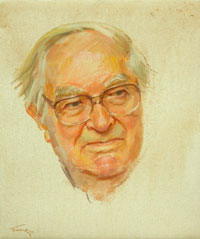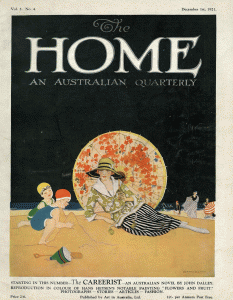Vale Diana Gribble

As co-founder of three publishing companies, Di Gribble had a profound effect on Australian literature and public commentary.
‘Diana Gribble was a legend in Australian publishing, having co-founded the McPhee Gribble imprint that published such ground-breaking works as Helen Garner’s Monkey Grip and Puberty Blues by Gabrielle Carey and Kathy Lette’, said University Librarian Philip Kent.
Established in the mid-1970s, the Carlton-based McPhee Gribble introduced Australian readers to authors like Tim Winton, Murray Bail, Kaz Cooke and Martin Flanagan. Gribble’s business partner was Hilary McPhee.
The company was bought by Penguin in 1989 but Di Gribble’s remarkable publishing career continued.
In 1990 she and Eric Beecher co-founded the Text Media group that was later sold to Fairfax for A$70 million.
In 2003 Gribble and Beecher created an online publishing group, Private Media Partners, that now owns six web publications including the influential political commentary site Crikey.com.au.
‘The University of Melbourne Library is indeed fortunate to hold the archives of McPhee Gribble and also its predecessor organisation, Sisters Publishing Ltd’, Philip Kent said. ‘These archives are a significant part of our holdings of feminist publishers’ records.’
The McPhee Gribble company archives are held in the University of Melbourne Archives. This important collection contains author files, business documents, press cuttings and some production material such as artwork, page layouts, galleys and page proofs.
Sisters Publishing began in 1979 as the ‘valiant idea’ of five Melbourne publishers: Hilary McPhee, Diana Gribble, Joyce Nicholson, Anne O’Donovan and Sally Milner. They decided Sisters would publish quality works ‘for women, by women and about women’.
To avoid prohibitive distribution and storage costs, Sisters was conceived as a mail-order book club with a quarterly subscription-only newsletter offering Sisters’ own publications and ‘the best feminist books from publishers here and overseas’, all at discount rates.
The Sisters Publishing archive is the complete record of the company and documents all of its activities.
For details of the Sisters Publishing and McPhee Gribble archives, browse the ‘collections’ section of the University Archives website.
Researchers can access the McPhee Gribble and Sisters Publishing archives via the Cultural Collections Reading Room or by contacting the University of Melbourne Archives.
Related links:
- Hilary McPhee’s website
- ‘Generous, wise, stable and reliable: tributes flow for publisher Gribble’. Article in The Age, 6 October 2011.
Catalogue details:
1999.0048
MCPHEE GRIBBLE PTY LTD [1975-1990]
Creator(s):
Mcphee Gribble Pty Ltd [-]
1. Author files (1975-1990) for all McPhee Gribble authors include correspondence between authors, agents, editors, publishers; contract negotiations; production planning documents; manuscripts; royalty statements and other material. 2. Administration files (1975-1990) include contracts; directors’ files; minutes of sales and marketing meetings; publishing policy documents; business plans, balance sheets and financial records; copies of outward correspondence; subject files (1976-1990); rejected manuscript files; some production material including art work, page layout, galley and page proofs. 3. Presscuttings of book reviews, interviews and articles on authors.
108 m. (419 boxes, 3 cartons, 16 volumes).
Cassette tapes
Photograph
Business, organisations





